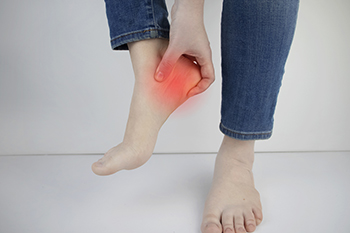
Research has indicated that it is beneficial for people who run to make less than eight changes in their running routine at a time, as this may help to reduce or prevent running injuries. It is important to refrain from increasing speed and mileage too quickly, in addition to wearing correct running shoes. Runners tend to experience more aches and pains in comparison to people who enjoy cycling and swimming. Covid-19 restrictions may have led people to change their running habits from the gym to the road, and the difference in a smooth treadmill versus an uneven street can cause injuries and foot pain. Many experienced runners know the benefits of properly warming up before running, and this can prepare the body for the toll running takes on the feet. It is important to focus on one change to the routine at a time because this can give the body ample time to adjust. If you would like more information about how running can affect the feet, and how to prevent injuries, please confer with a podiatrist who can address any concerns you may have.
All runners should take extra precaution when trying to avoid injury. If you have any concerns about your feet, contact one of our podiatrists of Biebel & DeCotiis Podiatry Associates. Our doctors will treat your foot and ankle needs.
How to Prevent Running Injuries
There are a lot of mistakes a runner can make prior to a workout that can induce injury. A lot of athletes tend to overstretch before running, instead of saving those workouts for a post-run routine. Deep lunges and hand-to-toe hamstring pulls should be performed after a workout instead of during a warmup. Another common mistake is jumping into an intense routine before your body is physically prepared for it. You should try to ease your way into long-distance running instead of forcing yourself to rush into it.
More Tips for Preventing Injury
- Incorporate Strength Training into Workouts - This will help improve the body’s overall athleticism
- Improve and Maintain Your Flexibility – Stretching everyday will help improve overall performance
- “Warm Up” Before Running and “Cool Down” Afterward – A warm up of 5-10 minutes helps get rid of lactic acid in the muscles and prevents delayed muscle soreness
- Cross-Training is Crucial
- Wear Proper Running Shoes
- Have a Formal Gait Analysis – Poor biomechanics can easily cause injury
If you have any questions, please feel free to contact one of our offices located in Holmdel and Middletown, NJ . We offer the newest diagnostic and treatment technologies for all your foot care needs.









